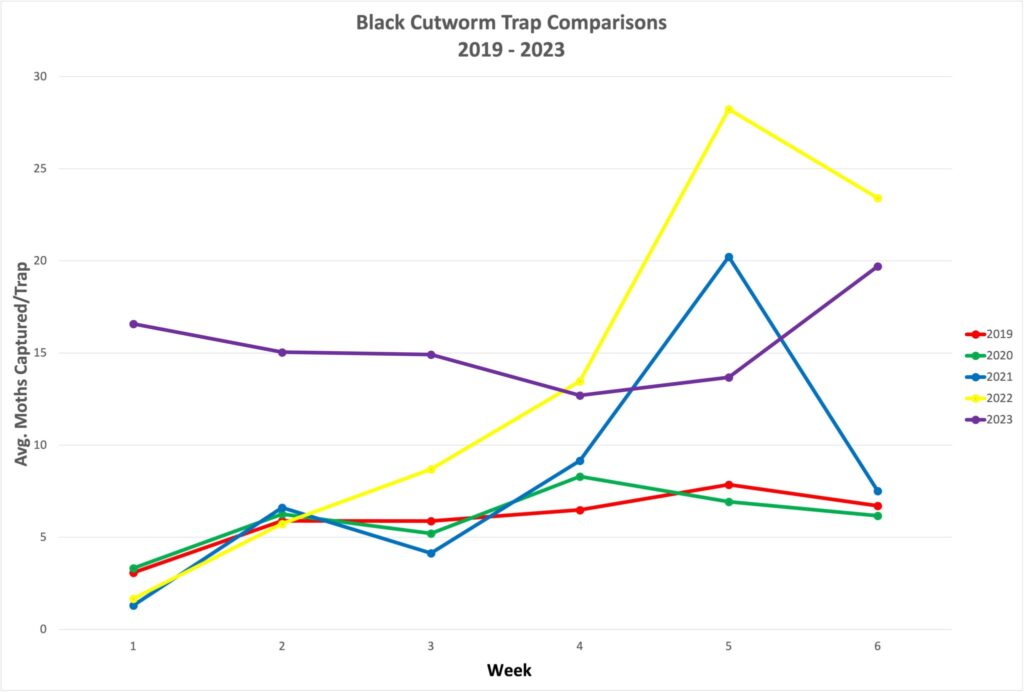
Could this be a cutworm year? Rainfall has delayed field work (e.g. weedy fields) and corn planting (i.e., lots of emerging corn).

Could this be a cutworm year? Rainfall has delayed field work (e.g. weedy fields) and corn planting (i.e., lots of emerging corn).

Locally, we have been impressed with the number of black cutworm moths captured in our pheromone traps the last few weeks.

For the last couple of weeks, storms originating in the Southwestern U.S. have effectively “vacuumed up” black cutworm (BCW) moths and deposited them, along with rainfall, in the Midwest.

No surprise, as reported in last week’s Pest&Crop, the “landing spots” for the many black cutworm moths into the state are now being realized. Another encouragement to scout high-risk corn and soybean fields as they emerge. Black cutworm larvae, some near pupation, were reported cutting soybean seedlings in Southwest Indiana. The river bottom fields, lush with weeds earlier this spring, had lost 4 to 8,000 plants/acre from the damage. Because of soybeans ability to compensate for lost plants, and the size of the cutworm larvae, no treatment will be necessary in these fields. Fortunately, the damage was scattered throughout, rather than concentrated in areas of the fields. If replanting, or filling-in, is being considered, the following publication may be of help, click HERE. In West Central Indiana, black cutworm damage was being reported in one-leaf sweet corn planted into cover crop residues. Most plants had some leaf feeding, and cutting[Read More…]

Every spring, voluteers throughout the state put forth considerable effort in trapping for the arrival and intensity of black cutworm moths. We are indebted to these faithful bug counters, hoping you also appreciate their efforts as reported in the “Black Cutworm Adult Pheromone Trap Report.” If you recognize a name or two on this list of volunteers, by county, please thank them for their efforts! Heck…buy them a cup of coffee! Not since 2012 have we seen such an early flush of black cutworm moths! As described in a Pest&Crop #3 article, an intense storm causing lives and destruction on April 1, also brought massive numbers of moths from the Southwestern States. In addition, we’ve not had widespread freezes since then. Because of that, we set that date as biofix, and began accumulating heat units for cutworm development, that also tracks very closely to corn development. This is all explained[Read More…]
2023 Black Cutworm Pheromone Trap Report Form

Once again, we urge you to view the “Black Cutworm Pheromone Trap Report.” For the fifth consecutive week, our volunteer trappers have been busy counting captured moths, e.g., lots of intensive captures.
2023 Black Cutworm Pheromone Trap Report Form
2023 Black Cutworm Pheromone Trap Report Form
2023 Black Cutworm Pheromone Trap Report Form
© 2024 Purdue University | An equal access/equal opportunity university | Copyright Complaints | Maintained by Pest&Crop newsletter
If you have trouble accessing this page because of a disability, please contact Pest&Crop newsletter at luck@purdue.edu.